Periodontitis is a fairly common oral disease, but many people underestimate the severity of the disease. When it progresses, it leads to negative consequences such as pulp death, tooth loss, affecting health and causing damage. reduced quality of life. Learn more about this disease to find ways to prevent and treat yourself.
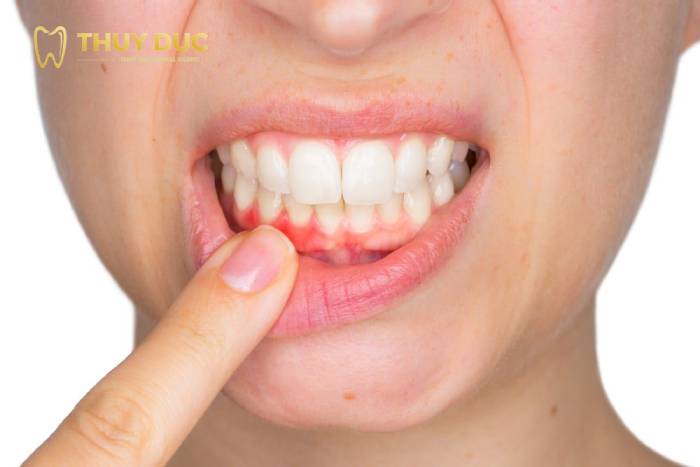
Table of contents
What is periodontics?
The periodontium is an organization surrounding the teeth that functions to firmly support the teeth. The periodontium includes: gums, alveolar bone, ligaments, gingiva and gingival papillae (periodontal protrusions located below the teeth).
Each of these parts has its own role: the gums hug the tooth roots, protecting the sensitive soft tissue underneath and preventing bacterial penetration; Alveolar bone and ligaments connecting teeth to bone keep the tooth roots strong.
What is periodontitis?
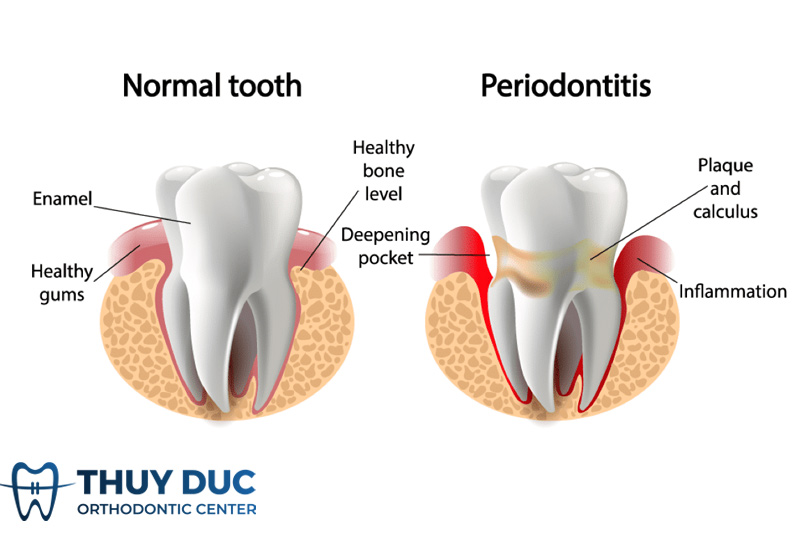
Periodontitis is a gum infection, including gingivitis and destructive periodontitis. In the long term, the gums are no longer able to cling to the tooth roots, creating opportunities for bacteria to penetrate, grow, destroy the alveolar bone, and form periodontal pockets.
Periodontitis occurs when the disease has progressed to a serious stage, damaging soft tissue and destroying the bone around the teeth. Periodontitis can cause teeth to become loose or lead to tooth loss.
Finding the right cause and the right treatment method will completely cure the condition. However, prevention is better than cure. Maintain daily oral hygiene habits and have regular check-ups to prevent disease as well as reduce the chance of the disease getting worse.
Symptoms of periodontitis
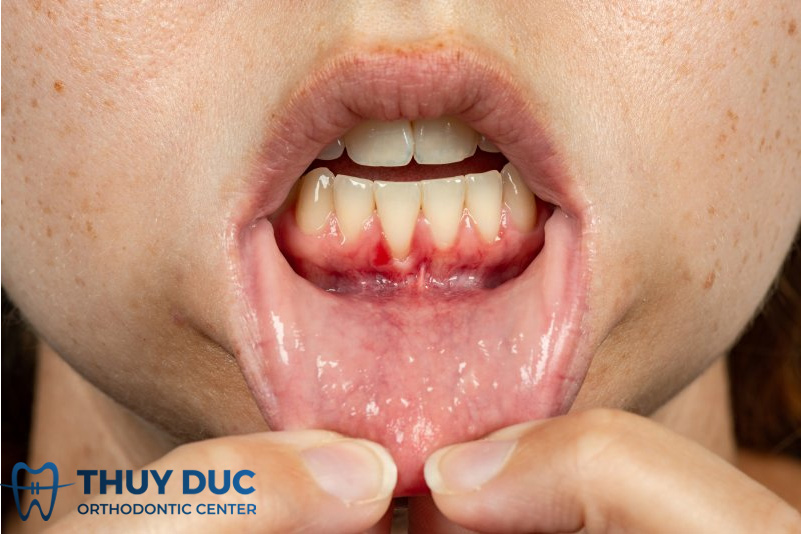
In the early stages, the disease has no clear signs, often no symptoms at all, and is very difficult to detect. Monitor the following signs of the disease progressing through each stage:
- On both sides of the teeth and tooth roots, plaque appears.
- Gums are swollen, bright red or dark red
- Gums bleed easily (especially when brushing teeth, flossing between teeth or having strong impact on the gums).
- The feeling of discomfort is not obvious
- Periodontal pockets form between teeth and gums, creating “ideal” hiding conditions for harmful bacteria
- Beginning to show signs of gum recession. The gums recede from the teeth and do not cover the teeth tightly, like receding gums, causing serious loss of aesthetics.
- Gums often bleed even without any impact
- Teeth loosen
- Breath has an unpleasant odor
- The deeper the periodontal pockets, the more harmful bacteria accumulate in the periodontal pockets.
- Formation of pus pockets. Tartar forms in these pus pockets and is not easily removed with regular oral hygiene measures
- The alveolar bone is destroyed
- The teeth are loose and there is difficulty in chewing
- Teeth loosen and fall out
Complications of periodontal disease
When periodontal disease becomes too severe and is not treated promptly, it can cause tooth loss. The bacteria that cause periodontitis enter the patient’s bloodstream through gum tissue, and can seriously affect the heart, lungs and other parts of the body such as respiratory disease, rheumatoid arthritis, and epilepsy. coronary artery or stroke. Therefore, advanced periodontal disease requires dental cleaning deep into the gum lines.
Classification of periodontal diseases
Common types of periodontitis include:
Chronic periodontitis. This is the most common type, often occurring in adults. This type is caused by a buildup of plaque formed by poor hygiene, which over time will destroy the gums and bone, and eventually lead to tooth loss if not treated promptly.
Periodontitis attacks. Starts in childhood or early adulthood. This type progresses quickly and the patient will lose both teeth and bones if not treated.
Necrotizing periodontitis, characterized by the death of gum tissue, dental ligaments and bone when there is no longer supporting gum tissue, lack of blood supply leading to necrosis and severe infection. This type often occurs in people with suppressed immune systems such as HIV infection, cancer treatment, or malnutrition. This is the most complicated type of development and the most difficult to treat, so patients need to be very careful to prevent it.
Subjects susceptible to periodontal disease
The following people are at high risk of periodontal disease:
– People suffering from gingivitis
– Not brushing your teeth regularly
– Smokers and substance abusers
– Obese people, elderly people
– Diet lacking nutrients, especially Vitamin C
– People who are taking certain medications that cause dry mouth or affect the gums
– People undergoing cancer treatment or HIV/AIDS have a weakened immune system.
– People with diseases such as diabetes, rheumatoid arthritis, etc.
Cause of the disease
(1) Dental plaque is the main factor causing periodontal disease because that plaque contains a lot of bacteria. If not cleaned thoroughly, it will cause periodontitis
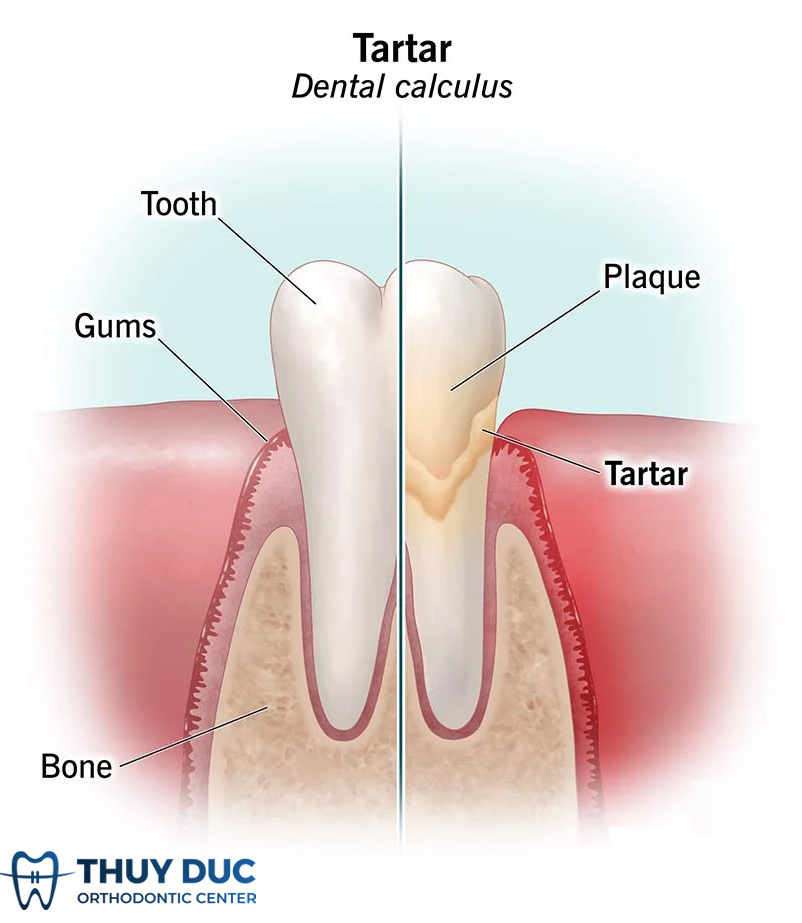
Plaque over time will become tartar. Tartar is more difficult to remove than plaque because it is hard and adheres tightly to the gums and crown of the teeth. Brushing and flossing cannot remove tartar and requires a doctor’s intervention.
Untreated plaque will cause gingivitis, a mild form of periodontal disease. Gingivitis needs to be treated to prevent the risk of periodontal disease. Gingivitis can be completely cured with proper treatment and proper oral care.
(2) Untreated gingivitis is the next cause of periodontitis:
Gingivitis causes periodontal pockets to develop between the gums and teeth that are filled with plaque, tartar and bacteria and will become deeper and contain more bacteria if the condition persists.
These infections destroy gum tissue and bone, and ultimately result in the loss of one to several teeth. In addition, continuous chronic inflammation can cause stress and weaken the patient’s immune system.
(3) During the disease, if the patient’s body has systemic diseases, it also becomes the cause of accelerating the progression of the disease and making periodontal disease more serious, the whole body’s health declines, and it is susceptible to bacteria. penetrate and attack.
Disease progression
Periodontal disease progresses through the following 4 main stages:
Stage 1: Formation of plaque
At this stage, harmful bacteria begin to accumulate at the roots of teeth, between teeth, and along the gum line through food scraps that are not thoroughly cleaned and form plaque, gradually forming tartar. Stage 1 often has no obvious signs, so the patient does not detect it.
Stage 2: Inflammation
Over time, tartar adheres tightly and irritates the gums, making them swollen, sensitive and prone to bleeding when there are impacts such as brushing, eating, flossing…
Stage 3: Periodontal pocket formation
Between the teeth and gums, periodontal pockets (pus pockets) will form containing bacteria and pus. Often by this stage, the disease has progressed seriously, making treatment more time-consuming and difficult.
Stage 4: Teeth and tooth socket are destroyed
Bacteria continue to accumulate, multiply and develop in an infected environment, destroying the alveolar bone, causing teeth to loosen, gums to recede, and become vulnerable. The worst case scenario is that the gums are seriously damaged and teeth fall out.
During the course of the disease, dangerous complications can occur such as pain in the temples, cardiovascular disease, sepsis, diabetes, respiratory diseases, premature birth with low birth weight, etc.
Treatment process
Examination to diagnose periodontal disease
When there are signs of periodontal disease, the doctor will conduct an in-depth examination and create a detailed periodontal treatment plan. The patient will have all teeth measured for pus pockets to evaluate periodontal disease. The patient will then have panoramic and full mouth films (14 films) to evaluate the periodontal condition in detail.
Carry out treatment
Treatment of periodontitis depends on the severity of the disease.
Scrape tartar
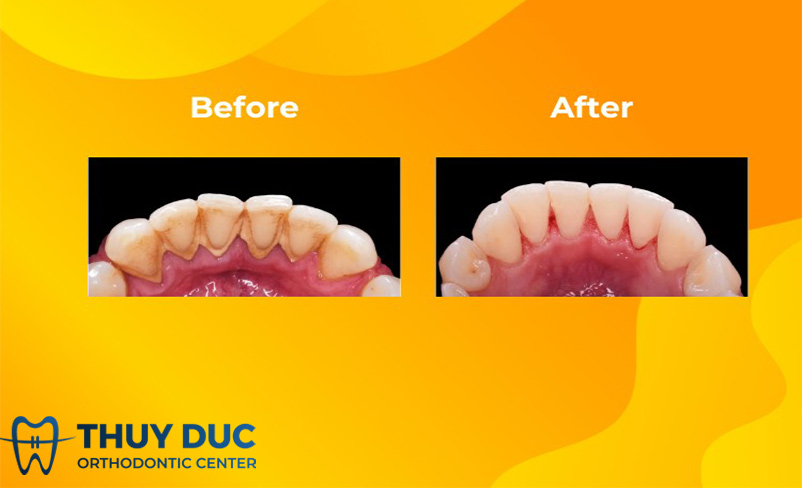
The first and important step in the periodontal treatment process. Scaling with an ultrasonic vibrator will minimize the risk of damage to the gums and will not affect the tooth pulp.
Treatment
Treatment and cleaning of periodontal tooth roots (Applicable to mild cases)
This is a non-surgical treatment method, suitable for mild stages of disease development, when the periodontal pockets are not very deep and there is little loss of adhesion.
Periodontal surgery (Applicable to severe cases)
In cases where the disease becomes more severe, gum surgery is needed to remove deep periodontal pockets (> 5mm, severe loss of attachment, severe alveolar bone loss, subosseous pocket inflammation or intraosseous pockets) to be able to treat the disease. completely cured.
In many cases, patients with periodontal disease often have complications due to long-term pulpitis, so they still need root canal treatment. In cases where the patient is allergic to anesthetics and has diseases such as high blood pressure, diabetes, cardiovascular disease, etc., the new anesthetic must be replaced with a myelocidal drug.
After periodontitis treatment, patients need to follow the doctor’s instructions regarding diet and oral hygiene. To prevent disease recurrence, doctors recommend that patients have regular check-ups every 3 – 6 months to check their health after treatment and reduce the risk of disease recurrence.
Treatment costs
Each stage of periodontitis will have different symptoms and not everyone is the same, so the cost of treatment will depend on the regimen given by the doctor. Severe periodontitis requires surgery, treatment costs will be higher because of the complexity of the steps involved. To receive a detailed quote, please contact the dentist via hotline 093.186.3366 – 086.690.7886 or fill out the form below.
Periodontitis has a complicated progression, so patients cannot be subjective and need treatment as soon as the initial signs appear. Finding a reputable dentist for treatment is also very important. Thuy Duc Dental Clinic has spent more than 14 years of establishment and development with the starting point being Dr. Pham Van Viet – Former Head of the Department of Odonto-Stomatology of the Viet Soviet Friendship Hospital. Since then, professional quality has continued to be preserved and promoted. Periodontists are highly skilled, have many years of experience and have successfully treated many patients. In addition, new technical facilities and advanced modern machinery technology support the most effective periodontal treatment process.
CONTACT THUY DUC DENTAL DENTIST TO RECEIVE DIRECT CONSULTATION FROM A SPECIALIST
HOTLINE: 093.186.3366 – 086.690.7886
Website: https://nhakhoathuyduc.com.vn/
